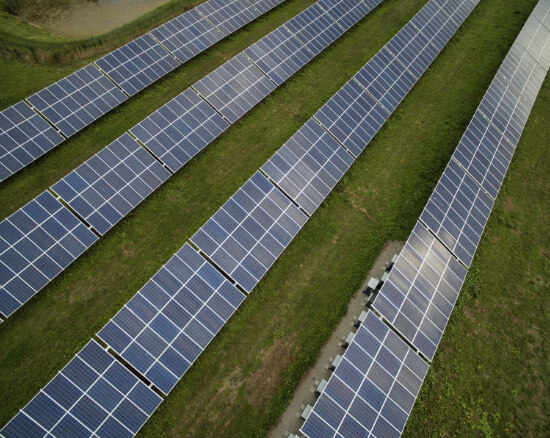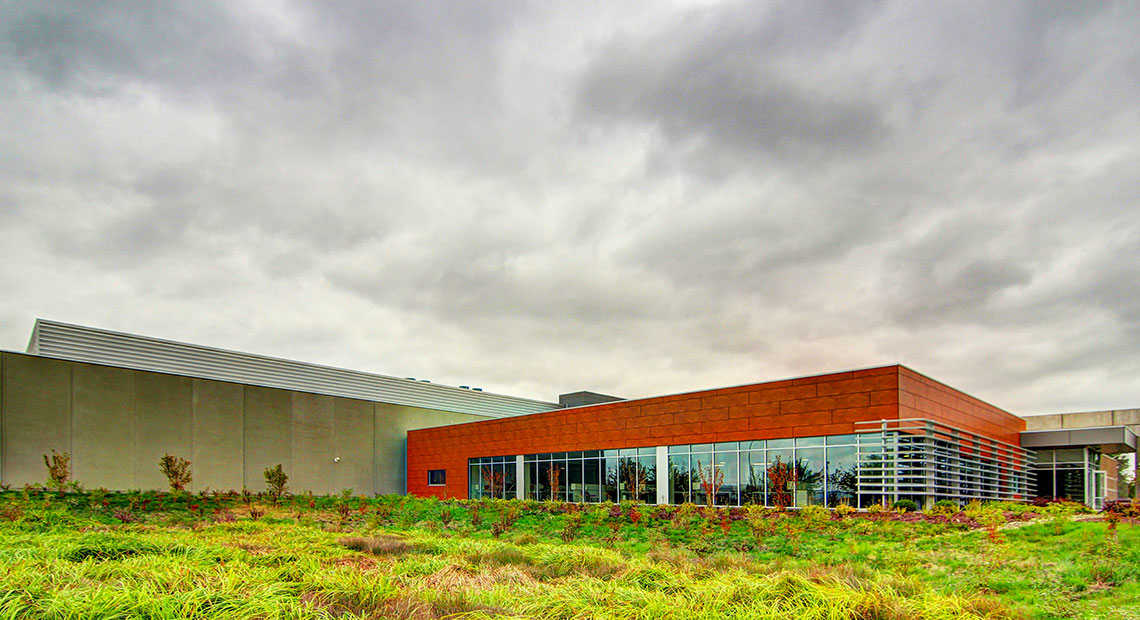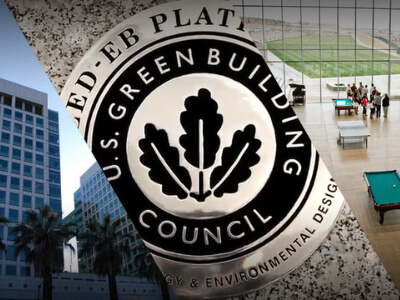How we’re creating sustainable operations.
Our goal is to power 100% of operations with renewable energy by 2035. Our new, all-electric North Tower building will be the first of its kind in Silicon Valley — and it’s just one of the ways we’re driving carbon-free growth and reducing waste.
Carbon-free growth.

- Adobe has set approved Science-Based Targets
- Committed to 100% of energy from renewable sources by 2035
- More than 70% of our employees work in LEED-certified offices
Powering a new energy future.
Committing to renewable energy and storage.
We established our 100% renewable energy goal years ago, making RE100 commitments and joining the Science-based Targets initiative with verified goals. We advocate for local, regional and federal policies to decarbonise and modernise our grids and open them up to renewable energy. And we plan to reach our goal without purchasing any unbundled renewable energy credits or carbon offsets.
In 2017 and 2018, we entered into two grid-scale power purchase agreements (PPAs) that brought us closer to reaching our RE100 goal. First, we signed a 2.5-megawatt, grid-scale, “open” access solar PPA for our Bangalore site. So instead of buying unbundled renewable energy credits to offset carbon-based electricity, we’re buying solar energy that goes directly into the local power grid. And second, we partnered with Facebook and Enel Green Power to sign the tech industry’s first aggregated purchase of wind energy. This was an important step in helping open up the US renewable energy market, stabilise energy costs and eliminate pollution. It also provides revenue for local farmers, ranchers and landowners.
Measuring and managing energy.
Our monitoring system captures energy and critical operations data based on thousands of data points, from electricity, water and natural gas usage to the power usage effectiveness (PUE) of all our data centres. We measure and report Scope 1 and 2 carbon emissions at all our owned and leased facilities as well as our share of emissions at co-located data centres. We take our Scope 3 emissions seriously and as part of our verified science-based targets we’ve set goals to reduce employee travel even as our business grows. We report all this information to CDP and post it on our website.

Building green.
We were one of the first companies to adopt the US Green Building Council’s Leadership in Energy & Environmental Design (LEED) standards. This commitment is helping us to operate efficiently, reduce our impact on the planet and stabilise costs. We obtain LEED certifications for new construction and remodels as well as ongoing operations and maintenance of our buildings to ensure that our workspaces are among the most environmentally sound in the world. We also drive energy efficiency at our data centres through practices like server-room consolidation and virtualisation. Over 70% of our employees work in LEED-certified facilities where they breathe clean air, drink safe water, work under natural light and enjoy the benefits of innovative design.
Designing environmentally conscious data centres.
We chose Hillsboro, Oregon, for the site of our major data centre for several reasons. Tax “enterprise zone” incentives allow us to access low-cost, high-percent, large hydroelectric power content, with the potential for transitioning to 100% renewable energy over time. Oregon’s mild climate is conducive to energy efficiency, the area is not in a flood zone or prone to major annual temperature differentials and Hillsboro has a reliable local power and communications grid that is a legacy of the Washington County chip industry. Other tech businesses with renewable energy goals operate in the area, so we have opportunities to partner on electricity procurement. The site was designed for future photovoltaic generation installations and it offers high water security and very low material risk from climate-related scenario analysis (e.g., low drought, low extreme temperature, not in or near high-fuel burn potential etc.).
The data centre has served as an R&D hub for consolidating major site server rooms for economies of scale. And we’ve partnered with energy efficiency leaders to implement technologies like hot/cold aisles and heat re-use as well as to refresh equipment such as servers, storage and networking.
We also work closely with our collocated data centres (COLOs) on our sustainability journey. We partner with them on policy advocacy and help them to set renewable energy goals and find ways to achieve them on the grids where they operate.
Waste reduction.
With our transition from a physical supply chain to a fully digital one, we’ve reduced the environmental impact of our products, including waste, by more than 95%. For the waste we do generate, we work with our employees as well as local partners like SIMS Recycling and Green Standards to responsibly divert it to compost or recycling. As a result, our diversion rate is over 90% each year.

Practicing sustainability.
For more details on Adobe’s commitment to the environment, read our Sustainability Policy.